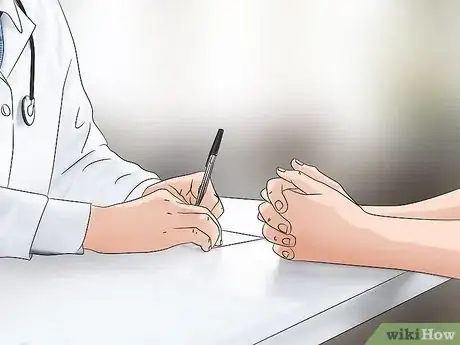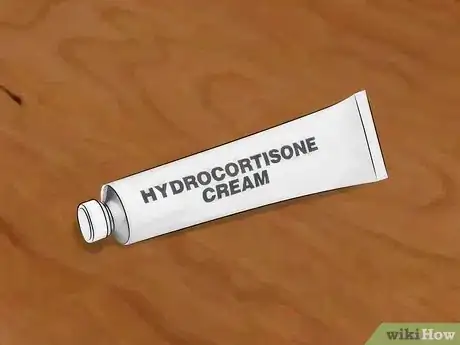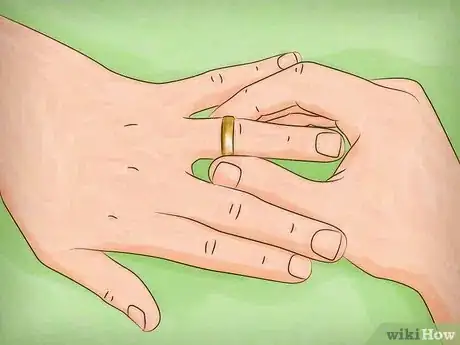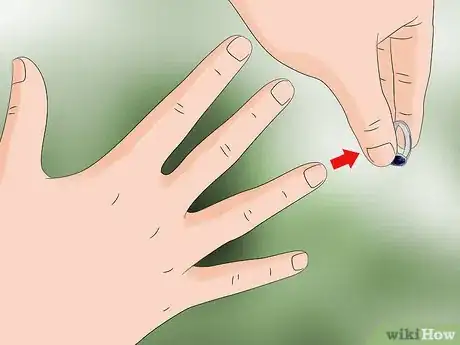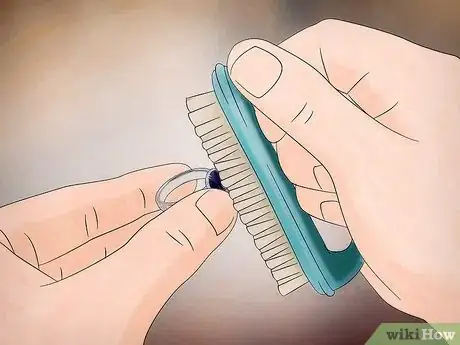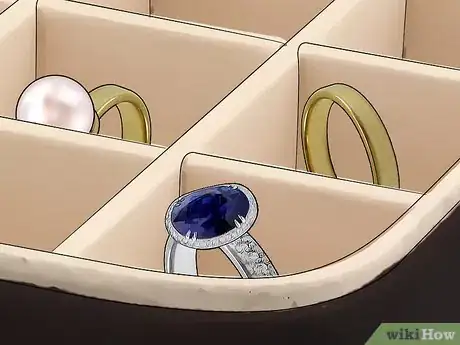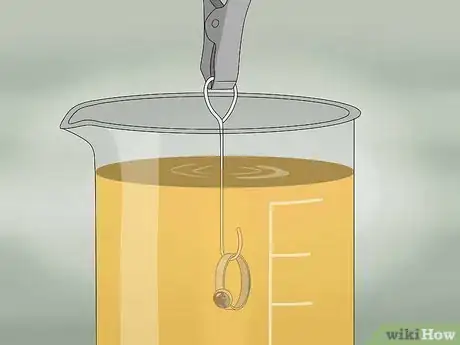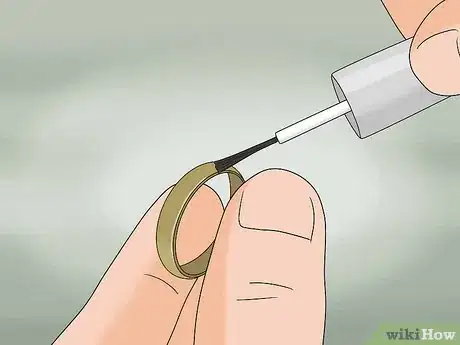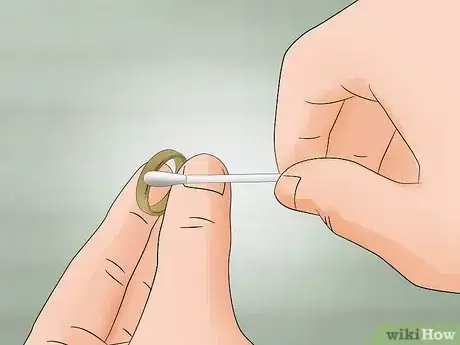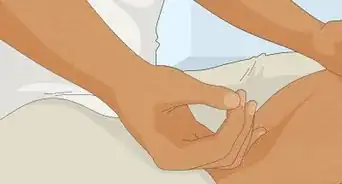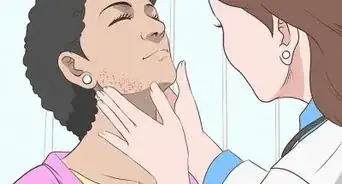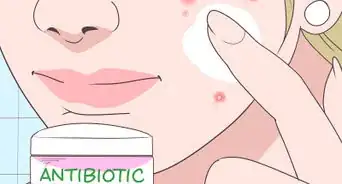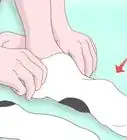This article was co-authored by Navid Malakouti, MD, FAAD. Dr. Navid Malakouti is a Board Certified Dermatologist specializing in cosmetic dermatology, dermatologic surgery, and medical dermatology. He treats patients of all ages for conditions like acne, rosacea, psoriasis, skin cancer, botox, fillers, lasers, and chemical peel. Dr. Malakouti is a Diplomate of the American Board of Dermatology, Fellow of American Academy of Dermatology, American Society for Dermatologic Surgery, and American Society for Laser Medicine and Surgery, and a member of the Skin of Color Society. He holds a BS in Biochemistry and Cell Biology from The University of California, San Diego and an MD from The Virginia Commonwealth University School of Medicine. He completed his Dermatology residency in Washington D.C. at Howard University, VA Medical Center, Children's National Hospital, and the National Institutes of Health.
This article has been viewed 107,081 times.
If you have developed a rash beneath a ring, don't panic. Ring rash is common and simple to treat. Visit your doctor or dermatologist to identify if the problem is caused by dirt or a nickel allergy. If the the metal is not to blame, you can still wear your ring, as long as you keep your hands clean and moisturized. If you do have an allergy to nickel or another metal, however, you will need to protect your hands by either replacing or plating the ring.
Steps
Treating the Rash
-
1Visit your doctor. In most cases, the rash is caused by contact dermatitis. This means that your skin is reacting to something in the ring.[1] Your doctor can diagnose if this is caused by a nickel allergy, dirt and sweat, or another underlying cause.
- Your doctor may do a skin patch test to see if you have a nickel allergy.[2] They will apply patches of nickel, platinum, and other allergens to your skin for 48 hours to see if you react or not.
- If your skin does not react to the nickel, there may be a build-up of dirt or sweat under the ring. In this case, you may just need to clean your ring.
- One way to determine if it might be an allergic reaction is to consider how long you've been wearing the ring. If you've worn the ring for a long time but are just now having a rash, then it is likely not something in the ring. In that case, it is more likely to be an irritant that has gotten trapped under the ring.
-
2Apply a cortisone cream to reduce inflammation. Your doctor may recommend a mild over-the-counter cortisone cream to reduce redness and irritation. In more severe cases, you might get a prescription. Apply this once or twice a day for two to four weeks.[3] [4]
- Prescription hydrocortisone is usually stronger than over the counter creams.
- Always follow the instructions on the label.
- Use the cortisone cream for up to seven days. If your condition does not improve, return to the doctor.
Advertisement -
3Take an antihistamine pill to reduce itching. Your doctor may recommend an over-the-counter antihistamine, such as Benadryl (diphenhydramine) or Claritin (loratadine), to give you temporary relief.[5]
- Follow the label’s instructions for dosage information.
-
4Try an anti-fungal for a fungal rash. If your rash is peeling and getting larger, then it may be caused by a fungal infection caused by wetness and heat. This may occur if you've been sweating a lot under the ring. Talk to your doctor about this possibility and what they recommend for treatment.
- Your doctor may prescribe an anti-fungal cream, or you can find one over-the-counter.
Wearing the Ring
-
1Place the ring on a different finger. This will allow the rash to heal. If the ring causes a rash on that finger, too, stop wearing the ring.
-
2Remove all rings before getting your hands wet. Rashes can sometimes be caused by soap or water getting trapped under the ring. Take off your rings whenever you swim, shower, bathe, or wash your hands. Dry your hands completely before you put the rings back on.[6]
- Use a mild soap when you wash your hands. Dove, Olay, and Cetaphil are all good choices.
-
3Apply hand lotion daily. Lotion may reduce the friction under your ring. Moisturize your hands after you wash your hands to help avoid irritation. A hypoallergenic cream is the best choice.[7]
-
4Clean your ring. In some cases, dirt and sweat on the ring can irritate your skin, causing a rash. You can take your ring to a jeweler for a professional cleaning, or you can buy a jewelry cleaning solution. Dilute the solution with water according to the package's instructions, and soak your ring for up to 40 minutes. Use a toothbrush to gently scrub the stone.[8]
Dealing with Metal Allergies
-
1Switch to a different band. If the ring is valuable, you may not want to get rid of it. Instead, you can take it to a jeweler and ask them to change the band. Ask your jeweler what metals are used in your ring.
- Titanium, stainless steel, and 18-karat gold are usually safe for nickel allergies.
- It is not uncommon for nickel to be added to gold jewelry. The higher the karat, the less likely the ring contains nickel.
- White gold is more likely than yellow gold to contain nickel.
-
2Plate your band in rhodium. A jeweler can apply a rhodium plate around your ring to protect your fingers. This plate is cheaper than buying a new band, but it will wear off after a few years.[9]
-
3Apply nail polish to the ring. Choose a clear nail polish, and apply it to the inside of the ring. Let it dry completely before you wear the ring. Reapply the nail polish every two to three days.
- This is a good temporary solution for rings until you are able to either replace them or plate them.
- Nickel Guard is a varnish that is designed to protect your skin from jewelry. You can apply it to your ring in the same way as nail polish.
-
4Test all of your rings for nickel. If you are allergic to nickel, buy a nickel testing kit online or from your dermatologist. The kit will come with two chemicals. Apply a drop of each to your ring, and mix it with a cotton swab. If the swab turns pink, there is nickel in the ring. If it is does not, your ring is safe to wear.[10]
- This test will not damage your jewelry.
- Once you discover you're allergic to the ring, any symptoms should go away within 1-2 weeks once you stop wearing it.[11]
Warnings
- If your condition does not improve after seven days of treatment, return to your doctor.⧼thumbs_response⧽
References
- ↑ Navid Malakouti, MD, FAAD. Board Certified Dermatologist. Expert Interview. 19 July 2021.
- ↑ Navid Malakouti, MD, FAAD. Board Certified Dermatologist. Expert Interview. 19 July 2021.
- ↑ Navid Malakouti, MD, FAAD. Board Certified Dermatologist. Expert Interview. 19 July 2021.
- ↑ http://www.mayoclinic.org/diseases-conditions/contact-dermatitis/diagnosis-treatment/treatment/txc-20338772
- ↑ https://www.drugs.com/health-guide/contact-dermatitis.html
- ↑ https://www.aocd.org/page/HandRashes
- ↑ http://www.brides.com/story/rash-from-wedding-ring-cure
- ↑ http://www.brides.com/story/rash-from-wedding-ring-cure
- ↑ https://www.dermnetnz.org/topics/jewelry-allergy/
- ↑ https://www.dermnetnz.org/topics/jewelry-allergy/
- ↑ Navid Malakouti, MD, FAAD. Board Certified Dermatologist. Expert Interview. 19 July 2021.
About This Article
To cure a skin rash under your ring, first move the ring to another finger to let your skin breathe. If your other finger gets a rash, stop wearing the ring. Visit your doctor, who can give you a simple skin patch test to see what caused your rash, and recommend treatment. They might suggest you apply an over-the-counter cortisone cream or take an antihistamine, which will help reduce inflammation. If your rash is peeling and getting larger, it may be caused by a fungal infection, in which case your doctor will prescribe anti-fungal medication. For more tips from our Medical co-author, including how to safely wear a ring you’re allergic to, read on!
